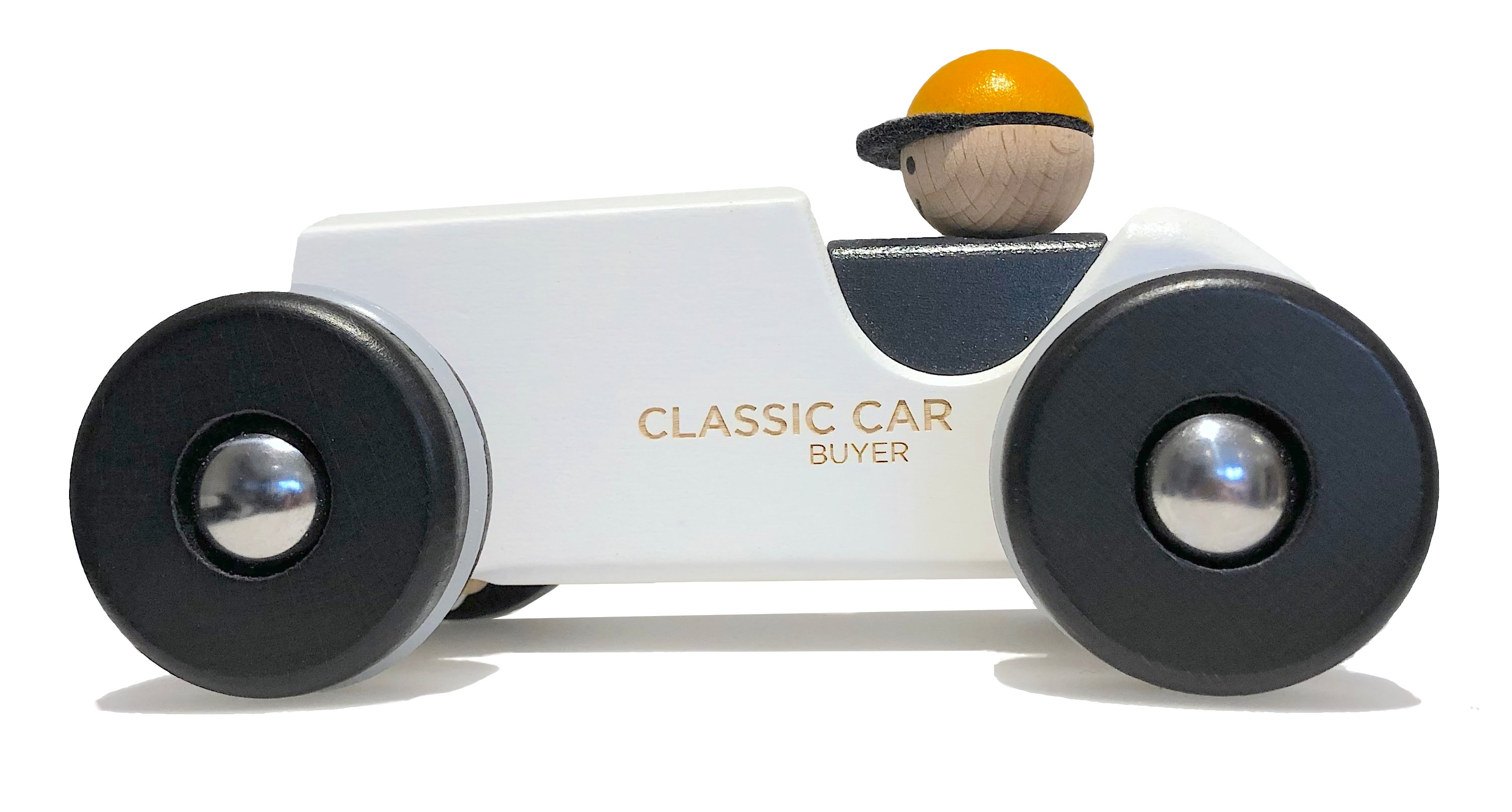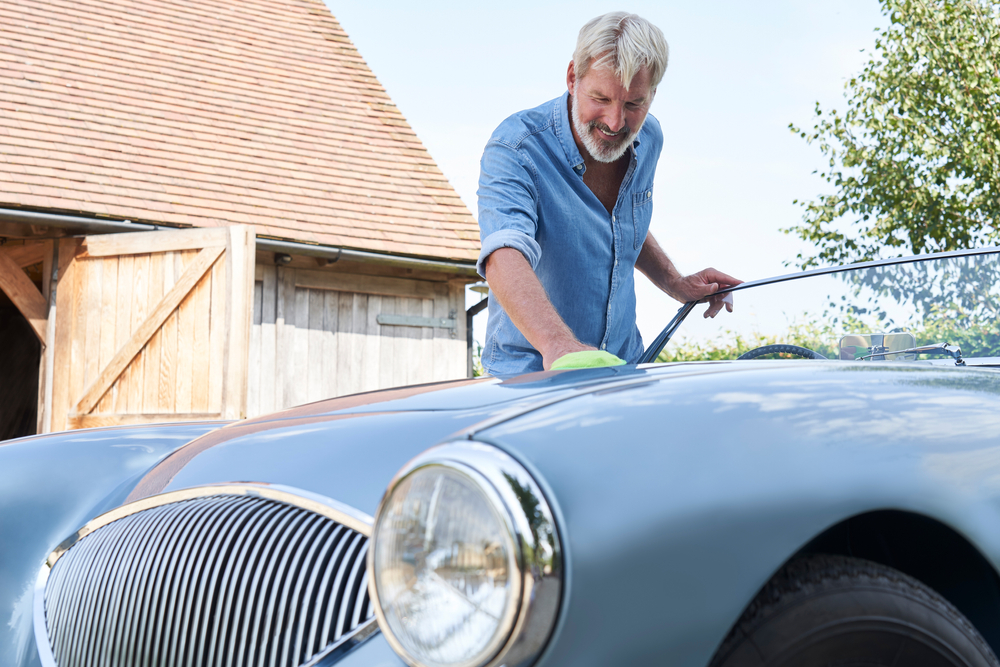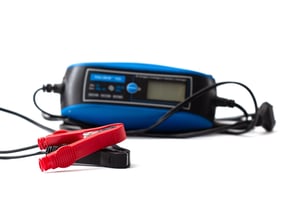When it comes to classic cars, rust is the silent enemy that can quietly undo years of careful...
As the colder months set in, many classic car owners will face a familiar dilemma, which is how to keep their beloved car safe and dry over the winter. For most owners, keeping it in storage is the preferred option, however doing this properly is essential. Poor preparation can lead to damp interiors, flat batteries, seized-up brakes or even pest infestations - all of which will undo the care you’ve lavished on your car throughout the rest of the year!
Here’s our guide on how to prepare your classic, where to store it, and how to protect it from the worst of the winter elements.
Preparing your car for storage
Before putting your car away for the winter, give it a full wash and wax. Dust, salt and dirt can cause corrosion if they’re left on the bodywork for months. Pay close attention to the underside, which often gets missed, and finish the car off with a good-quality wax or sealant to add a protective layer. Cleaning and treating the interior is equally important - make sure you hoover the carpets, wipe down all the surfaces, and condition the leather or vinyl if present to prevent cracking.
The mechanical prep is just as crucial. You should top up fluids such as the coolant, brake fluid and the oil - fresh oil is less acidic and helps protect the engine from internal corrosion. Inflate the tyres to the recommended pressure, or slightly higher, to prevent flat spots developing. If you’re planning on long-term storage, consider putting the car on axle stands or using tyre cushions. Finally, disconnect the battery or, better still, attach a trickle charger to keep it healthy over the winter. It's also a good idea to add antifreeze - just be sure the engine is completely cool before opening the coolant reservoir cap to avoid burns from hot coolant. After topping up the fluid with a water/antifreeze mix, run the engine for a few minutes to circulate the new fluid throughout the system.

Where to store your classic car
The best place to store a classic is in a secure, dry garage with good ventilation. A heated garage is ideal, but constant warmth isn’t essential - what matters most is stability. Sudden fluctuations in temperature encourage condensation, which can lead to rust. If your garage is prone to damp, you could consider investing in a dehumidifier or a breathable car storage bubble to regulate the moisture levels, if you want to go all out.
If you don’t have a garage, professional storage facilities are worth exploring. Many specialists offer secure, climate-controlled storage for classics, complete with regular checks and battery maintenance. It’s not the cheapest option, but it’s a bit of peace of mind if your car is particularly valuable or rare.
Outdoor storage is a last resort, but if this is unavoidable, choose a flat, sheltered spot away from trees (to avoid falling branches and droppings). Always use a breathable, fitted car cover designed for classics, never a cheap plastic tarp, which could trap moisture against the paintwork and accelerate any corrosion that is thinking about taking hold.
.jpg?width=1000&height=667&name=shutterstock_2423907997%20(1).jpg)
Storing your car safely
Once the car is clean, dry and in position, there are a few extra measures that will help it survive the winter months in perfect condition. First, prevent damp and mould from starting inside by leaving the windows slightly ajar for ventilation and placing moisture-absorbing silica gel packs or dehumidifier bags inside the car and in the boot. You could also remove or fold down carpets if you know they are prone to trapping damp.
The fuel also needs attention. Modern petrol contains ethanol, which can attract moisture and cause corrosion in the fuel system. Filling the tank before storing the car reduces the air space where condensation can form, and adding a fuel stabiliser will also then help prevent deterioration. Diesel classics are less prone to this issue but may still benefit from an additive.
Handbrakes can seize if left engaged for long periods, so it’s better to leave the car in gear or in park with some wheel chocks in place. To protect the brakes, consider rolling the car a few inches every month to avoid pads sticking to discs or drums.

Protecting it from pests!
Winter storage isn’t just about fighting rust and damp - those pesky pests can also pose a serious problem! Mice, rats and insects love the warmth and shelter of a stationary car. They can chew through the wiring, nest in the seat foam or clog air vents with debris - basically, they’ll have a fun old time and cost you a fortune come spring… To deter them, thoroughly clean out any evidence of food such as wrappers or crumbs from the interior, and consider placing mothballs or rodent repellents around the storage area. Some owners also use peppermint oil or ultrasonic pest deterrents too. Blocking off the exhaust and air intake with breathable covers or steel wool (removed before driving, of course) is another effective measure.
Just checking in…
Once your classic is safely tucked away, it pays to check on it periodically over the winter. Make sure the cover is still secure, the garage dry, and the trickle charger is working as it should. Come spring, a careful restart is then needed: check the fluids, tyres, and brakes before firing up the engine, and allow the car to idle gently before taking it out for a proper run.
Storing your classic car over the winter isn’t just about covering it and walking away - it’s about taking proactive steps to protect against damp, corrosion, pests and neglect. With the right prep, your car will emerge in spring as gleaming and reliable as the day you put it away!







